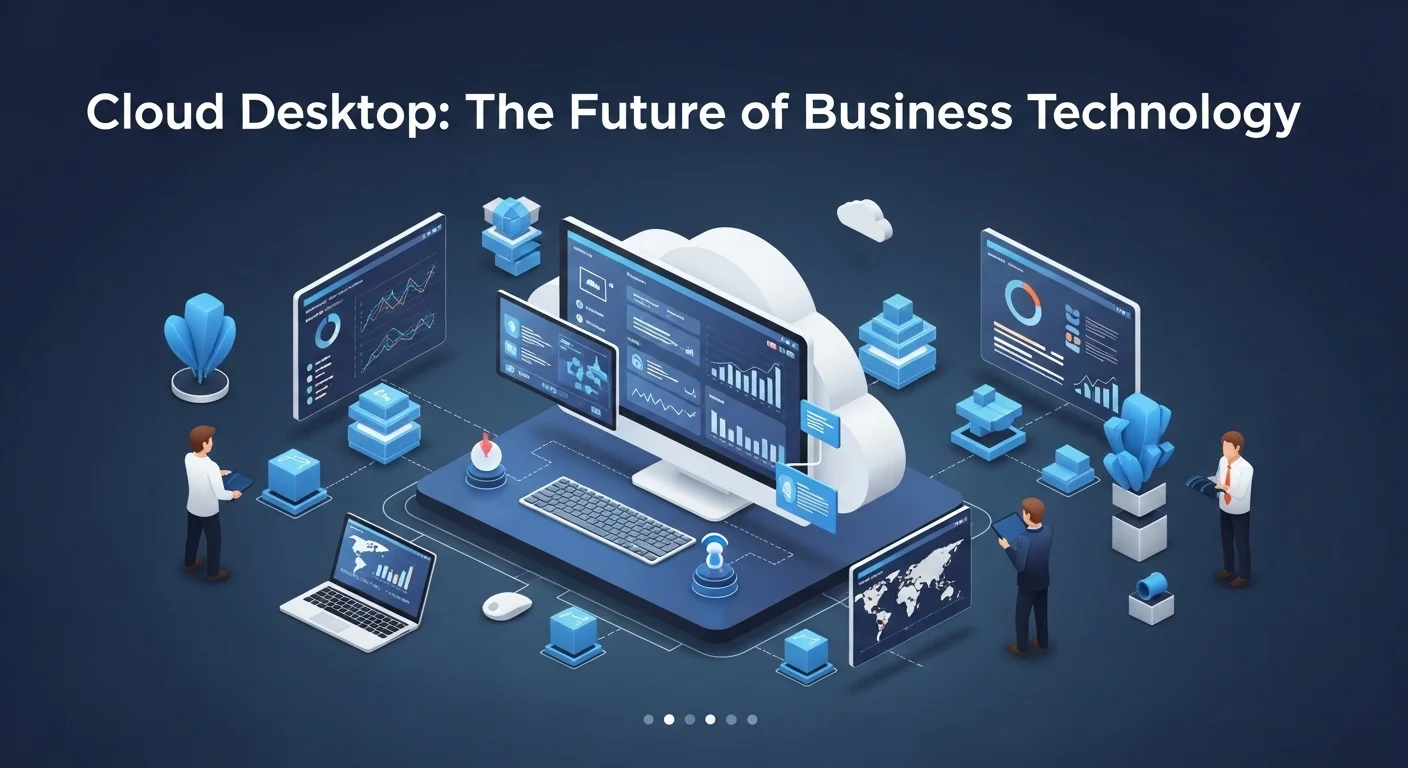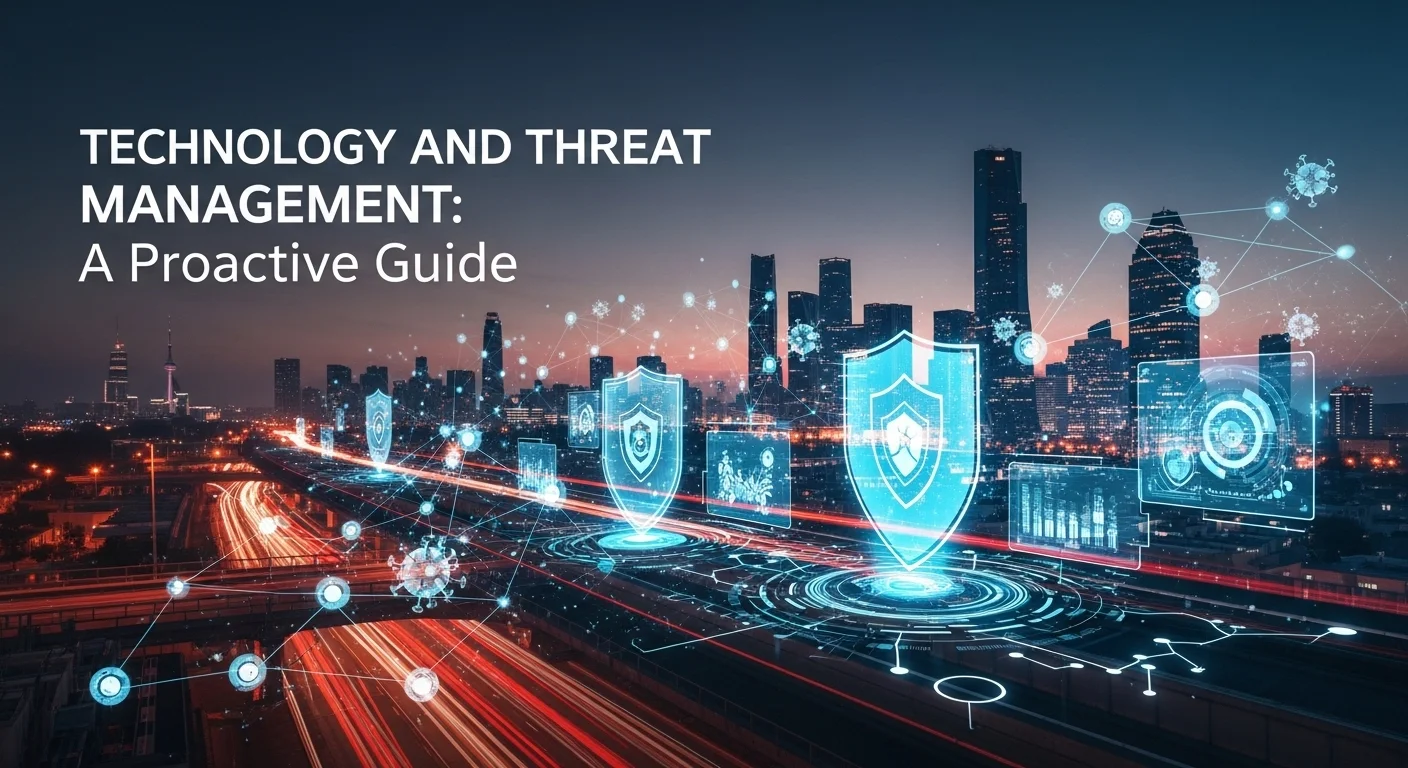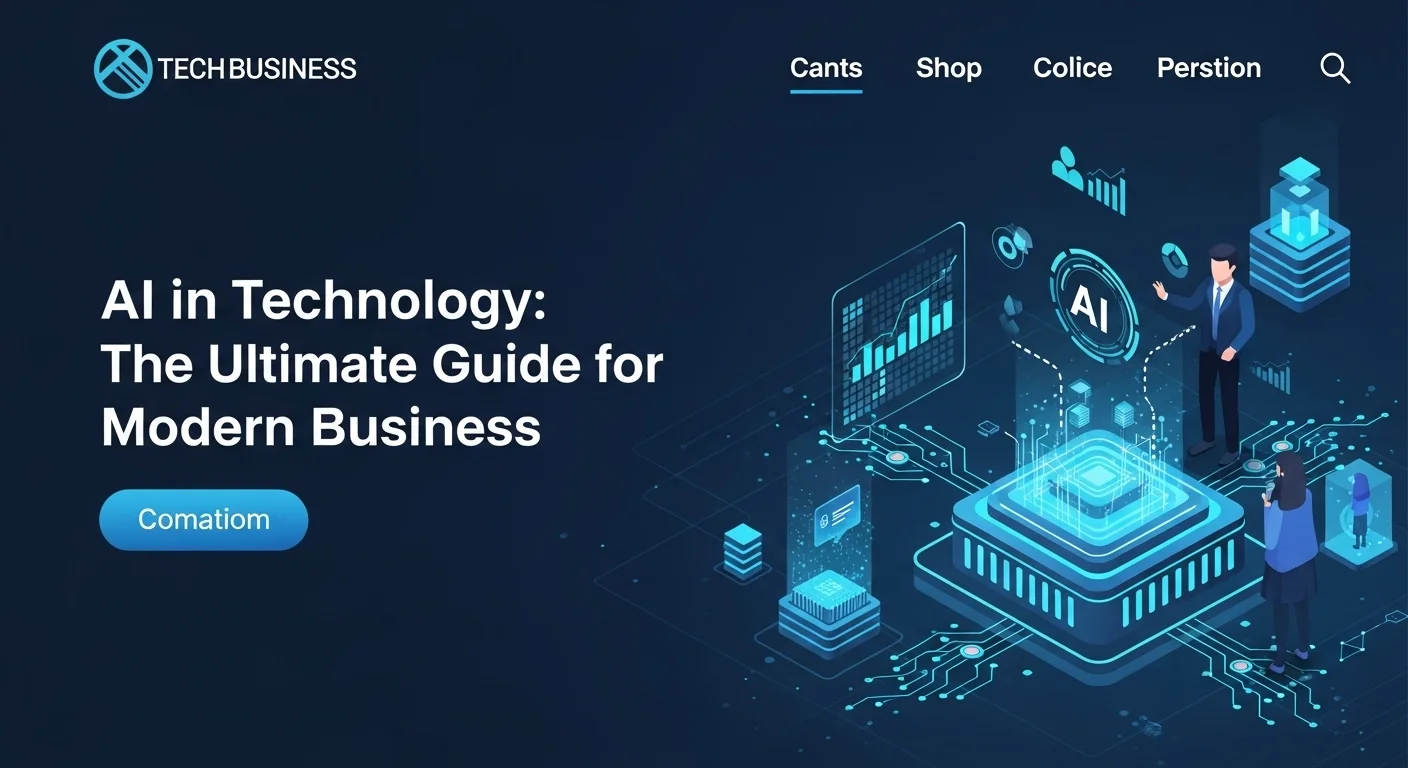What is a Cloud Desktop? Your Guide to DaaS for Modern Business

Executive Summary
I've spent over a decade helping businesses of all sizes break free from the chains of traditional, office-bound hardware. The single biggest game-changer I've seen in that time is the Cloud Desktop, also known as Desktop-as-a-Service (DaaS). The concept is simple but powerful: imagine your entire work computer—the operating system, all your files, and every application—living securely in the cloud, ready to be accessed from any device, anywhere in the world. This isn't just a fancy tech trend; it's a fundamental shift that grants companies incredible agility and tightens security, all while giving employees the freedom they need to be productive. This article is my deep dive into this transformative technology. I'll break down what it is, why it's become essential in today's remote-first world, and how you can make it work for your team.
Table of Contents
Table of Contents
What is a Cloud Desktop and Why Does It Matter?
In my experience, many businesses hit a wall with their traditional IT setup. They're stuck with physical servers and individual desktop computers that are expensive to buy, a headache to maintain, and a real bottleneck to growth. This is where the Cloud Desktop comes in as a breath of fresh air. At its heart, a Cloud Desktop, usually delivered as a service called DaaS, is your personal work computer hosted in a secure, remote data center. Instead of everything being stored on a physical hard drive at your desk, your operating system, software, and data all live in the cloud. You can then log into your complete, familiar desktop in cloud from just about any device with an internet connection—a cheap laptop, a tablet, even your smartphone. For the person using it, the experience feels exactly the same as a powerful local PC, but the technology behind it is worlds apart and infinitely more flexible.
The importance of this technology really can't be overstated. It's the next logical step from the old-school on-site Virtual Desktop Infrastructure (VDI), which forced companies to buy and manage their own complex server farms. Cloud Desktops remove all that heavy lifting and cost, making top-tier virtual desktops accessible to everyone. This is critical for two main reasons. First, it perfectly aligns with the massive shift to the cloud that we're seeing everywhere. Businesses want the reliability and scale of the cloud for everything, and desktops are no exception. Second, it's the perfect answer to the explosion of remote and hybrid work. Giving employees a secure, consistent, and fast work environment, no matter where they are, is no longer a perk—it's a requirement. A cloud based desktop ensures every team member has the exact tools they need, without the huge security risk of company data being scattered across personal laptops. Centralizing that data is a foundation of any modern cybersecurity strategy I recommend.
The Core Benefits Driving its Adoption
So, why are so many companies making the switch? It comes down to a handful of powerful benefits that solve real-world business problems.
1. Seriously Better Security and Compliance
In a world of constant cyber threats, security is everything. I've seen the panic when a company laptop gets stolen. With a Cloud Desktop, that panic disappears. Because all data and applications are safe in a secure data center, a lost device is just a piece of hardware—no sensitive data is on it. From one central place, IT can enforce security rules, control who accesses what, and make sure every desktop is always updated. This centralized control is gold for industries like healthcare or finance with strict compliance rules, as it makes audits and data protection so much simpler. Providers like google cloud desktop build their entire platform on rock-solid security, which gives business leaders peace of mind.
2. Incredible Flexibility and Speed
Business is unpredictable. You might need to hire 50 seasonal workers tomorrow or give a contractor temporary project access. With old IT, that's a slow, painful process of buying and setting up hardware. With a cloud based desktop, I've seen teams provision new desktops in literally minutes. Need more power for a user? You can add more CPU or RAM on the fly. This kind of agility allows businesses to move at the speed the market demands, not at the speed their hardware allows.
3. A Smarter Way to Manage Costs
Cloud Desktops change how you pay for IT, moving from huge upfront capital expenses (CapEx) to a predictable monthly operational expense (OpEx). Instead of buying powerful PCs for everyone, you pay a subscription. This frees up cash and makes budgeting a breeze. Plus, since the cloud does all the heavy lifting, you can use cheaper devices like thin clients or Chromebooks for your employees, extending hardware life and cutting costs. When clients ask me for the cheapest cloud desktop, I tell them the real savings come from this flexibility—like paying by the hour for part-time staff instead of for a full-time license. The cloud's pay-as-you-go model is where the true optimization happens.
4. Built-in Business Continuity
What happens if a fire, flood, or power outage hits your office? If your systems are on-site, you're out of business. With Cloud Desktops, your business is protected. Since the desktops and data are stored in secure, often geographically separate data centers, your team can keep working from anywhere with an internet connection. Data is automatically backed up by the cloud provider, so a local disaster won't lead to a catastrophic data loss. This resilience is no longer a luxury; it's a core part of a smart business strategy.
Real-World Applications Across Industries
The beauty of the desktop in cloud is how it adapts to different needs:
- Healthcare: I've helped hospitals give doctors secure access to patient records from any terminal or tablet, which drastically improves patient care and collaboration.
- Financial Services: For trading firms, it provides a locked-down environment where analysts can work with sensitive data without any risk of it leaking from a personal device.
- Engineering: We've set up engineers with GPU-powered virtual desktops, allowing them to run complex CAD software on a standard laptop from home, eliminating the need for bulky, expensive workstations.
- Education: Schools can give every student equal access to specialized software on their own devices, bridging the digital divide.
- Contact Centers: It allows for hiring remote agents anywhere in the world and scaling the team up or down in minutes, all while maintaining total security.
Ultimately, finding the best cloud desktop depends entirely on your specific needs. What software do you use? How many people? What's your budget? Providers like Amazon WorkSpaces, Microsoft Azure Virtual Desktop, and the google cloud desktop platform all have their strengths. Doing your homework is the first step to unlocking a new level of efficiency and agility for your business.

The Complete Guide to Choosing and Implementing a Cloud Desktop
Making the leap to a cloud desktop environment is more than just a tech upgrade; it's a strategic business decision. To get it right, you need to understand the tech, know the players, and have a solid plan. Here's my complete guide for anyone looking to navigate the world of cloud desktops, based on years of hands-on implementation experience. We'll cut through the jargon and focus on what you actually need to know to choose the best cloud desktop solution for your company.
The Tech Breakdown: VDI vs. DaaS and Why It Matters
To really get cloud desktops, you first need to understand where they came from. The whole conversation boils down to two key terms: VDI and DaaS.
VDI (Virtual Desktop Infrastructure) vs. DaaS (Desktop-as-a-Service)
These two are often confused, but the difference is critical. Think of it like this: VDI is like building your own car from scratch. DaaS is like leasing a brand-new, fully-serviced car.
- Virtual Desktop Infrastructure (VDI): This is the do-it-yourself approach. You buy the servers, the storage, the networking gear, and all the complex software. You build and manage everything in-house. This gives you total control, but I've seen it drain budgets and IT resources like nothing else. It requires a huge upfront investment and a team of experts to keep it running.
- Desktop-as-a-Service (DaaS): This is the modern, cloud-based approach. A provider like Amazon, Microsoft, or Google handles all that complex backend infrastructure. You simply subscribe to the service and pay a predictable fee per user. DaaS gets you out of the hardware business and lets your IT team focus on what really matters: supporting your users. For most businesses, especially small to mid-sized ones, DaaS is the more agile, scalable, and cost-effective choice. When we talk about a desktop in cloud today, we're almost always talking about DaaS.
The Magic Behind the Screen: Display Protocols
The 'feel' of a cloud desktop—how quick and responsive it is—all comes down to the display protocol. This is the technology that streams the desktop image to your screen and sends your mouse clicks and keystrokes back to the cloud. A good protocol makes the experience seamless, even over a shaky Wi-Fi connection. The main ones you'll hear about are Microsoft's RDP, Citrix's HDX, VMware's Blast Extreme, and Teradici's PCoIP (used by Amazon). Each has its strengths, but they've all gotten remarkably good at delivering a smooth, like-local experience.
Comparing the Heavyweights: Major Cloud Desktop Providers
Choosing the right provider is the most important decision you'll make. In my experience, the best cloud desktop is the one that fits your existing ecosystem and specific needs.
1. Microsoft Azure Virtual Desktop (AVD)
If your company already lives and breathes Microsoft 365, AVD is often a no-brainer. Its killer feature is multi-session Windows 10/11, which lets multiple users share one virtual machine. This is a huge cost-saver. If you have the right Microsoft licenses, AVD can easily be the cheapest cloud desktop option. For companies already using Azure, the management feels familiar and integrates perfectly.
2. Amazon WorkSpaces
Amazon was a pioneer here, and their WorkSpaces offering is mature, simple, and incredibly reliable. It's a fully managed service, which makes setup a breeze. I often recommend it to businesses that want to get up and running quickly without a lot of complexity. With flexible hourly and monthly billing, it's easy to find a plan that fits your use case, whether you need Windows or Linux desktops.
3. Google Cloud Secure Desktops
The google cloud desktop solution comes from a security-first perspective, built around their 'BeyondCorp' zero-trust model. If your top priority is locking down data and controlling access, Google is a fantastic choice. By using Google's own massive private network, it delivers a very fast and stable connection for users around the globe. It's a powerful contender, especially for businesses already on Google Cloud Platform (GCP).
4. The Specialists: Citrix and VMware
You can't talk about virtualization without mentioning Citrix and VMware. These guys have been leaders in this space for decades. Their solutions (Citrix DaaS and VMware Horizon Cloud) offer unmatched flexibility, allowing you to deploy desktops on-premises, in a private cloud, or on any major public cloud. I've found their platforms are the top choice for large enterprises with complex, mixed-IT environments who need advanced management features and the absolute best protocol performance.
My Playbook for a Successful Rollout
A successful cloud desktop project is 20% technology and 80% planning. Here are the steps I follow with every client.
- Know Your Users: Don't just give everyone the same desktop. A call center agent has very different needs from a software developer. I start by creating user 'personas' that define the apps and performance each group needs. This avoids overspending on power users don't need and frustrating others with slow performance.
- Run a Pilot Program: Never go all-in from day one. Select a small, representative group of users and run a pilot test for a few weeks. This is where you find the kinks—an app that doesn't work right, a printer that won't connect. It's the most crucial step for gathering feedback and ensuring a smooth, company-wide launch.
- Communicate and Train: People are naturally resistant to change. You have to sell the 'why.' Explain the benefits of their new desktop in cloud. Show them how easy it is to log in and use. A little training goes a long way in getting everyone on board and excited about the new tech.
- Make Security Job #1: The cloud provider secures the cloud, but you have to secure your access to it. This is a shared responsibility. We always define strict access policies, enforce multi-factor authentication (MFA), and set up monitoring to watch for any strange activity. This is your data—protect it accordingly.
Making the move to a cloud based desktop is a journey. By understanding the tech, weighing your provider options like the google cloud desktop, and following a clear implementation plan, you can truly transform your organization into a more secure, agile, and cost-effective workplace.

Advanced Tips for Mastering Your Cloud Desktop Environment
Getting your cloud desktop solution up and running is a huge accomplishment, but the work doesn't stop there. From my experience, the difference between a good deployment and a great one lies in continuous optimization and a relentless focus on security. Here are some of the most critical tips and strategies I've learned over the years to help you master your desktop in cloud, ensuring it’s fast, secure, and truly empowers your team.
Security Masterclass: Your Guide to a Bulletproof Cloud Desktop
While cloud providers build a secure foundation, you are the gatekeeper. The responsibility for securing who accesses your environment, and what they do inside, is yours. A layered security strategy is non-negotiable.
1. Adopt a 'Zero Trust' Mindset
The core idea of Zero Trust is simple: 'never trust, always verify.' It means you don't automatically trust any user or device, even if they're on your office network. For your cloud based desktop, this means:
- Mandatory Multi-Factor Authentication (MFA): This is step one, and it's not optional. In my opinion, it's the single most effective way to block unauthorized access from stolen passwords.
- Smart Access Policies: Set up rules that control access based on context. For example, you can block logins from risky locations or unmanaged personal laptops. Both Microsoft Azure and google cloud desktop offer powerful tools to create these 'conditional access' policies.
- The Principle of Least Privilege: This is a classic for a reason. Only give people the absolute minimum access they need to do their job. Don't hand out admin rights like candy. Use Role-Based Access Control (RBAC) to create specific permission sets for different teams.
2. Lock Down Your Network and Data
Protecting your digital assets means securing the data itself and the pathways to it.
- Encrypt Everything: Make sure your data is encrypted when it's stored in the cloud (at rest) and as it travels to the user's device (in transit). Major providers do this by default, but it's your job to verify and enforce it.
- Isolate Your Environment: Use virtual networks to create a secure bubble around your desktop environment, separating it from other resources. I always configure strict firewall rules to control traffic, only allowing what is absolutely necessary.
- Don't Forget the Endpoint: The physical device a user logs in from is still part of your system. Require endpoint protection (antivirus) on all devices and consider an Endpoint Detection and Response (EDR) tool for an extra layer of threat hunting.
3. Be a Watchful Guardian: Monitor and Audit
You can't protect what you can't see. I always tell my clients to set up comprehensive logging for everything: user sign-ins, admin changes, you name it. Use cloud-native tools like Azure Monitor or Google's Operations Suite to sift through these logs and set up automatic alerts for anything that looks suspicious. Regular reviews are key to catching threats early.
Optimization for Peak Performance and a Happy Team
If the user experience is laggy or frustrating, the project will fail. The goal is to make the virtual desktop feel just as snappy as a high-end local PC.
- Right-Size, Don't Over-Size: A very common mistake is giving everyone the same powerful (and expensive) virtual machine. An accountant running Excel doesn't need the same GPU-accelerated instance as a video editor. Use your user personas to match the virtual machine specs to the job. This not only makes users happier but is also the secret to achieving the cheapest cloud desktop configuration that actually works.
- Tackle Latency Head-On: Network delay is the ultimate enemy of a good remote desktop experience. Always choose the cloud region geographically closest to your users. For a distributed team, providers like google cloud desktop use their own private global network, which is much faster and more reliable than the public internet. Also, coach your remote users on the importance of a stable home internet connection.
- Master User Profiles: In many setups, users get a fresh, clean desktop every time they log in. To avoid them losing their settings and personalizations, a profile management tool like FSLogix is essential. It cleverly loads their personal profile at login, making a temporary desktop feel permanent and personalized.
Bringing It All Together: Real-World Scenarios
The best cloud desktop strategy is one that solves a real business problem. I once worked with a marketing agency struggling to manage software licenses and project files for their freelance designers. We set them up with a temporary desktop in cloud solution. Freelancers got access to a pre-configured desktop with all the right software and brand assets, and when the project ended, we simply revoked access. It solved a huge security and logistical nightmare for them. In another case, a financial firm used powerful, persistent cloud desktops for their analysts. This allowed them to run massive data models on secure, GPU-powered machines, with the peace of mind that no sensitive financial data ever left their protected cloud environment.
For those searching for the most budget-friendly options, don't be afraid to get creative. Using Linux-based desktops for your developers or taking full advantage of the multi-session features in AVD can dramatically lower your costs, helping you find the cheapest cloud desktop that fits your needs. The future of work is here, and it’s powered by the cloud. By implementing these strategies, you can turn your cloud desktop solution into a true competitive advantage.
Expert Reviews & Testimonials
Sarah Johnson, Business Owner ⭐⭐⭐⭐
As a small business owner, this was a great introduction. I was always a bit intimidated by the 'cloud,' but this broke it down clearly. I would have loved a small section on budgeting for a DaaS solution, but overall very helpful!
Mike Chen, IT Consultant ⭐⭐⭐⭐⭐
Solid overview. As an IT pro, I appreciated the comparison between AVD, WorkSpaces, and Google's offering. It confirmed some of my own findings. The section on implementation planning is a must-read for anyone considering a rollout.
Emma Davis, Tech Student ⭐⭐⭐⭐⭐
Fantastic and thorough article! I'm studying for a cloud certification, and this piece connected all the dots for me between the theory and real-world application. The explanation of display protocols was especially clear. Thank you!



